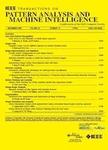版权所有:内蒙古大学图书馆 技术提供:维普资讯• 智图
内蒙古自治区呼和浩特市赛罕区大学西街235号 邮编: 010021

作者机构:Tsinghua Univ BNRist KLISS Sch Software Beijing 100084 Peoples R China Tsinghua Univ THUIBCS Beijing 100084 Peoples R China Xi An Jiao Tong Univ Inst Artificial Intelligence & Robot Coll Artificial Intelligence Xian 710049 Shaanxi Peoples R China Sun Yat Sen Univ Guangzhou 510275 Peoples R China
出 版 物:《IEEE TRANSACTIONS ON PATTERN ANALYSIS AND MACHINE INTELLIGENCE》 (IEEE Trans Pattern Anal Mach Intell)
年 卷 期:2022年第44卷第5期
页 面:2548-2566页
核心收录:
学科分类:0808[工学-电气工程] 08[工学] 0812[工学-计算机科学与技术(可授工学、理学学位)]
基 金:National Key R&D Program of China [2017YFC0113000]
主 题:Learning systems Correlation Data models Laplace equations Three-dimensional displays Brain modeling Task analysis Hypergraph learning hypergraph generation hypergraph learning tool tensor-based dynamic hypergraph learning classification and clustering
摘 要:Hypergraph learning is a technique for conducting learning on a hypergraph structure. In recent years, hypergraph learning has attracted increasing attention due to its flexibility and capability in modeling complex data correlation. In this paper, we first systematically review existing literature regarding hypergraph generation, including distance-based, representation-based, attribute-based, and network-based approaches. Then, we introduce the existing learning methods on a hypergraph, including transductive hypergraph learning, inductive hypergraph learning, hypergraph structure updating, and multi-modal hypergraph learning. After that, we present a tensor-based dynamic hypergraph representation and learning framework that can effectively describe high-order correlation in a hypergraph. To study the effectiveness and efficiency of hypergraph generation and learning methods, we conduct comprehensive evaluations on several typical applications, including object and action recognition, Microblog sentiment prediction, and clustering. In addition, we contribute a hypergraph learning development toolkit called THU-HyperG.